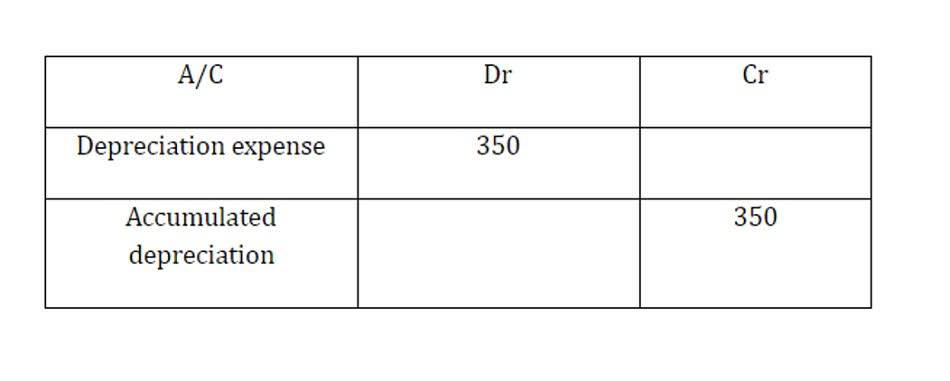Bookkeeping
The Percentage of Sales Method

The objective and task method requires careful planning and analysis to accurately estimate costs. The percentage of sales method may not account for external factors that can impact your marketing efforts. The “Affordable Method” of setting an advertising budget is particularly suitable for startups or businesses with limited financial resources.
- This simple example illustrates how the Percentage of Sales Approach can be used to create a basic budget and allocate resources based on projected sales.
- This method is seen as more reliable because it breaks down the probability of BDE by the length of time past-due.
- This method directly ties bad debt expense to the revenue generated during the same period.
- Consequently, by examining historical data and trends, businesses can determine these percentage relationships, which are constant, regardless of sales fluctuations.
- This is due to calculating bad expense using the direct write off method is not allowed in reporting purposes if the company has significant credit sales or big receivable balances.
What is sales revenue? Ultimate guide on how to calculate it

It ensures that the Bookkeeping vs. Accounting business does not overextend itself financially, and the method is straightforward and easy to implement, requiring minimal planning and analysis. This method is based on allocating funds to advertising only after all other business expenses have been accounted for. The primary principle is to avoid overspending and to ensure that essential business operations are not compromised for the sake of advertising.
Estimate revenue growth for the upcoming time period

Outside of these items, it is better to develop a detailed, line-by-line forecast that incorporates other factors than just the sales level. This more selective approach tends to yield budgets that more closely predict actual results. An approach that estimates bad debts based on a percentage of credit sales, aligning expenses with related revenues. The Percentage Of Sales Method is a financial percentage of sales method forecasting model used by companies for financial planning and management. It is based on the assumption that most of the company’s balance sheet accounts vary directly with sales.

What is the Percentage Of Sales Method?
- That is why the estimated percentage of losses increases as the number of days past due increases.
- The Percentage Of Sales Method serves primarily as a tool for financial forecasting and planning, virtually for every scale of organization.
- In this case, the company usually use the aging schedule of accounts receivable to calculate bad debt expense.
- There may be several methods to estimate how much of accounts receivable will eventually be uncollectible.
- Next, Barbara needs to calculate her estimated sales for the upcoming year.
Such uncollectible amounts should be recorded in the period of related sales to satisfy the matching principle. In particular, the estimated bad debts (i.e., amounts that the company thinks will be uncollectible) are recorded as an expense in the same period as the sales revenues that created the potentially uncollectable amounts due from customers. The percentage of sales method provides businesses with a practical approach to financial forecasting, enabling them to project revenue, expenses, and financial needs based on expected sales growth. While this method is useful for short-term planning and budgeting, businesses should consider its limitations and complement it with other forecasting techniques for greater accuracy. By continuously refining projections and adapting to market conditions, businesses can enhance financial decision-making and achieve long-term stability. As with the percentage-of-sales approach, the percentage-of-receivables approach only impacts the income statement when the allowance of doubtful accounts is adjusted (i.e., uncollectible balance is estimated).
- Once she has the specific accounts she wants to keep tabs on, she has to find how they stack up to her overall sales figures.
- Learn about percentage-of-sales approach and percentage-of-receivables approach in calculating allowance for doubtful accounts and bad debt expense.
- Larger companies allow for a certain percentage of bad credit in their financial analysis, but many small businesses don’t, and it can lead to unrealistic projections and unforeseen loss.
- It ensures that the business does not overextend itself financially, and the method is straightforward and easy to implement, requiring minimal planning and analysis.
- The percentage of sales method is limited because it assumes all costs and balance sheet items move in direct proportion to sales, which is not always true.
- This aging report shows that amounts which are current (i.e., not overdue) equal $76,000; amounts which are overdue by days equal $14,000; and so forth.

Another key advantage of the percentage of sales method is that it helps develop high-quality estimates for items closely correlated with sales. Besides the percentage of sales method formula, one must know its benefits and limitations. If her sales increase by 10 percent, she can expect your total sales value in the upcoming month to be $66,000. Next, Liz needs to calculate the percentage of each account in reference to her revenue by dividing by the total sales. We’ll go through each step and then walk through an example to see the formula in action. While these numbers are only useful in the short term and the process needs repeating, the percentage of sales model allows businesses to make educated decisions about the direction their companies are headed.
As helpful as the percentage of sales method can be for financial projections, it’s not an all-in-one forecasting solution. Using data mined from your CRM — unearned revenue along with more in-depth forecasting methods — can help you make more consistent, accurate forecasts. With the percentage of sales method, you can quickly forecast financial changes to your business — including both assets and expenses — based on previous sales history. This allows you to adjust budgets, strategies, and resourcing to ensure you hit desired targets.
